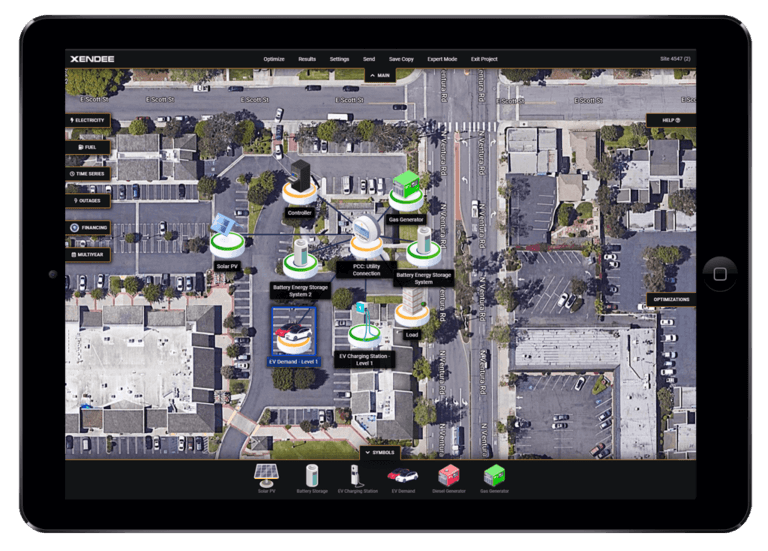With the adoption of electric vehicles accelerating, the demand for power from already maxed-out electric utilities grows as well. Microgrids offer a way for utilities to augment their capacity to provide power and decrease outages and also for the private sector to augment their access to power themselves. However, designing an optimized microgrid can be complex and time-consuming. Xendee's microgrid design software is helping work through the design and implement charging solutions more quickly.

"We've been perfecting this technology for years," said Xendee CEO Adib Naslé. "Now, as the EV boom intensifies, our platform is ready to help utilities and other stakeholders overcome infrastructure limitations."
The company's software allows precise modeling of microgrid projects, providing users with a detailed way to optimize both economic and technical specifications.
Microgrids function as localized energy grids, generating, storing, and distributing on-site power independently from the main utility infrastructure. Xendee says integrating microgrids into EV charging stations provides multiple benefits:
Backup power generation during grid outages for uninterrupted charging
Reduced dependence on lengthy and costly utility upgrades
Solar panels and battery storage to supplement grid capacity
Load shifting to avoid peak demand charges
A decentralized, renewable energy-integrated network
"With better planning and forecasting through our algorithms, we can optimize infrastructure to meet EV energy needs efficiently," said Naslé. "Reliability and optimization are central to our strategy."
Xendee's microgrid approach aims to solve a pressing problem: overstretched utilities are struggling to support the charging needs of expanding EV fleets and meet overall demand. Xendee has been developing solutions to navigate this roadblock.
"The inability to move projects forward because a utility doesn't have the capacity is a major hurdle," explained Naslé. "But with microgrids, we can overcome these infrastructure limitations."
Microgrids reduce dependence on traditional utilities by allowing commercial EV charging site owners to generate, store, and manage their own energy supply. This provides greater control compared to relying solely on the main grid.
Naslé sees microgrids as integral to the transition to sustainable energy. By supporting on-site solar power generation, microgrids enable EV charging infrastructure to utilize renewable energy.
"Our vision is a more decentralized, renewable-powered EV charging network across the country," said Naslé. "Microgrids play a role in making this vision achievable."
With climate change exacerbating grid vulnerabilities, Xendee is working to empower stakeholders with resilient solutions that can support the pace of transportation electrification.
The benefits stretch beyond technical advantages and also offer economic upsides.
"By reducing reliance on expensive peak power purchases from the utility, microgrids provide significant cost savings," explained Naslé. "The financial case for microgrids is compelling."
As more automakers unveil new electric models and governments set ambitious electrification targets, the pressure on charging networks continues mounting.
"Integrating microgrids is key to scaling EV charging for the future," said Naslé. "This technology unlocks new potential for utilities, site hosts, and EV drivers."
Even amidst the complexity of rapidly evolving markets, companies like Xendee are charging ahead with optimism about the future. Driven by microgrid innovation, they aim to enable the creation of the charging infrastructure needed to electrify transportation at scale.
ⓒ 2025 TECHTIMES.com All rights reserved. Do not reproduce without permission.




